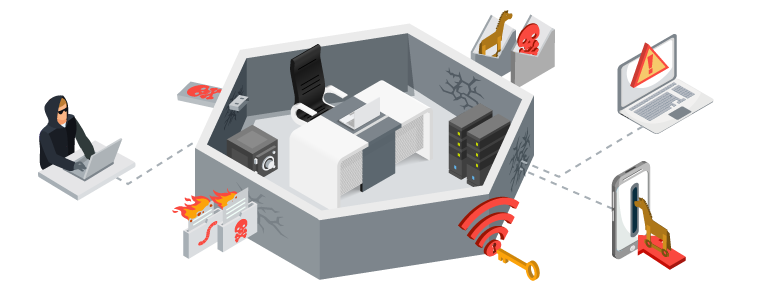As with any technology in today’s modern world, security threats are a risk. The powerful, poignant saying by Sir Francis Bacon, “Knowledge is power,” is of the utmost importance for businesses looking to protect themselves against virtual security threats and risks.
VoIP phone systems are becoming exceptionally popular in today’s business world. Not only are these systems extremely affordable, they offer a wide variety of productivity-saving features.
Consumers can stay informed about any VoIP security risks and instead of assuming all VoIP services are at risk, they should stay on the look out for possible threats, which are similar to those posed to other forms of technology, such as computers and smartphones.
- Phishing – This is a very common Internet security threat and often includes cybercriminals posing as banking institutions or email providers. Phishing scams are often placed via text, audio or SMS. Instead of taking every alert seriously, contact the banking institution directly (with the telephone number listed on bank statements, not the one listed in the phishing attempt).
- Audio Spam – This is very similar to email spam and accounts for approximately 10-percent of spam online.
- Call Hijacking – This is actually relatively sophisticated and is used by cybercriminals who take advantage of free Wi-Fi hotspots. When someone makes a call on a Wi-Fi hotspot, the cyber hacker can hijack the call and obtain sensitive information.
- ID Spoofing – This is when a cybercriminal makes calls but presents a different caller ID to the receiver. This can also affect regular traditional telephone calls.
- Call Tempering – This is not dangerous, just inconvenient. An attacker will simply strive to ruin the call quality by injecting annoying noise packets directly into the data stream. These attacks are not profitable and more of a nuisance, so they are not commonly employed by cybercriminals.
- Man in the Middle Attacks – This is most common when using an unsecured Wi-Fi connection. The cybercriminal attempts to intercept the call and reroutes it through their servers, which ultimately gives them the ability to inject malware and spyware into the caller’s system.
- Malware – The effect is often indirect, but many computer software programs are more vulnerable. In fact, this can be injected months in advance and activated once a VoIP connection is established.
- Eavesdropping – Just as with traditional landlines, VoIP users are at risk of someone eavesdropping. The data obtained while eavesdropping is usually used for identity theft purposes.
VoIP business technology is ever-developing and responding to potential cybercriminals as issues arise. The systems offer a number of advanced benefits. Jive recommends incorporating Internet security with VoIP business systems to ensure thorough protection.
